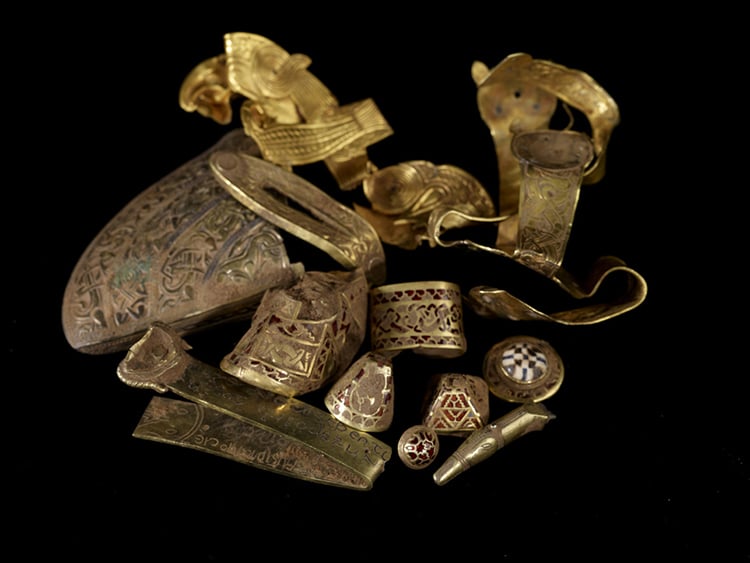
Every small child dreams of finding buried treasure, hidden by pirates or an ancient king. While adults may abandon these whimsical dreams, all hope is not lost for adventurers. Treasure troves—also known as hoards—are still being found across the world. Ordinary people continue to stumble upon caches of ancient coins, gold bracelets, and silver plates to this day.
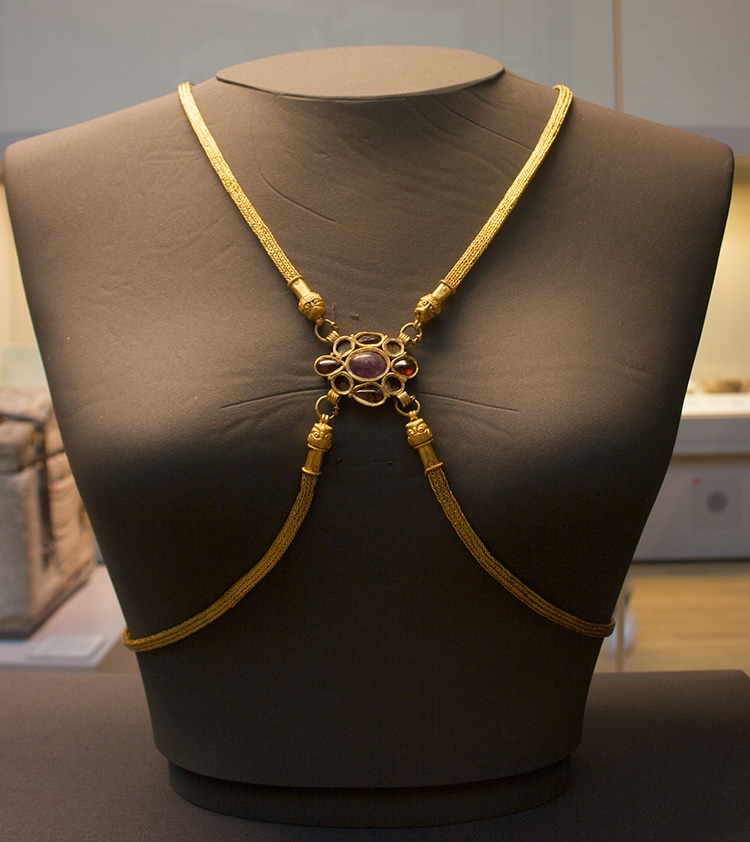
A gold body chain from the Hoxne Hoard of late Roman items, discovered in 1992 in Suffolk England. (Photo: Photograph by Mike Peel via Wikimedia Commons [CC BY-SA 4.0])
What Is a Treasure Trove or Hoard?

Treasure troves can be found across the world; however, Great Britain and Ireland can boast some of the largest and most famous discoveries. Treasure trove also has an important legal definition. Coin and bullion are defined to be treasure depending on the content of silver and gold, as well as the age of the items. In the UK, the Treasure Act 1996 governs all discoveries. In general, any finds older than 300 years and containing at least 10 percent gold or silver qualify as treasure. Pre-historic finds often qualify as well, regardless of metal content. Discoveries must be reported to the local coroner within 14 days, as found treasure has long been considered Crown property. To hide discovery can even result in prison time.


Famous Treasure Troves
The Broighter Gold

A golden boat from the Broighter Gold hoard. (Photo: Ardfern via Wikimedia Commons [CC BY-SA 3.0])
The Preslav Treasure
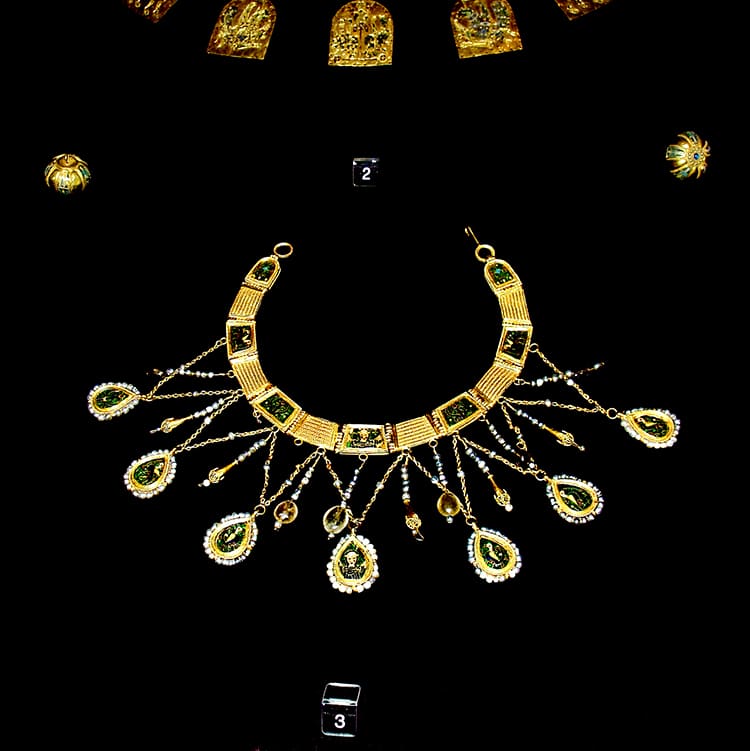
Byzantine necklace from the Preslav Treasure. (Photo: Yelkrokoyade via Wikimedia Commons [CC BY-SA 3.0])
The Saddle Ridge Hoard
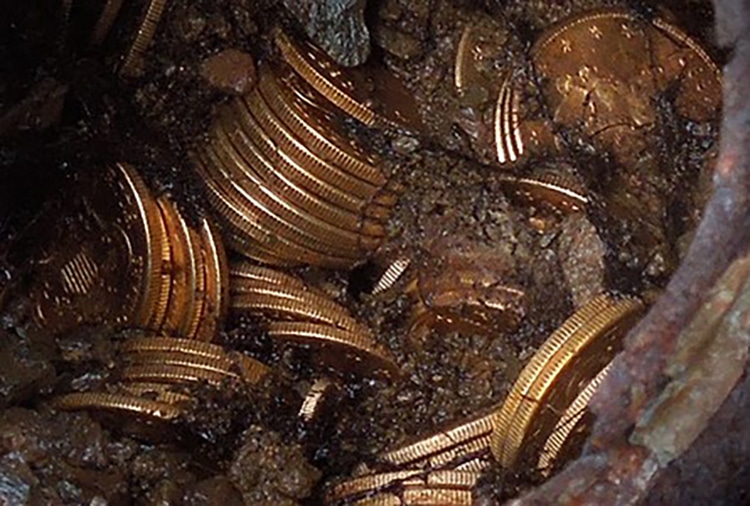
Coins as they were found in the Saddle Ridge Hoard of the California Sierra Nevada mountains. (Photo: Kagin’s Inc. via Wikimedia Commons [CC BY-SA 3.0])
The Hoxne Hoard
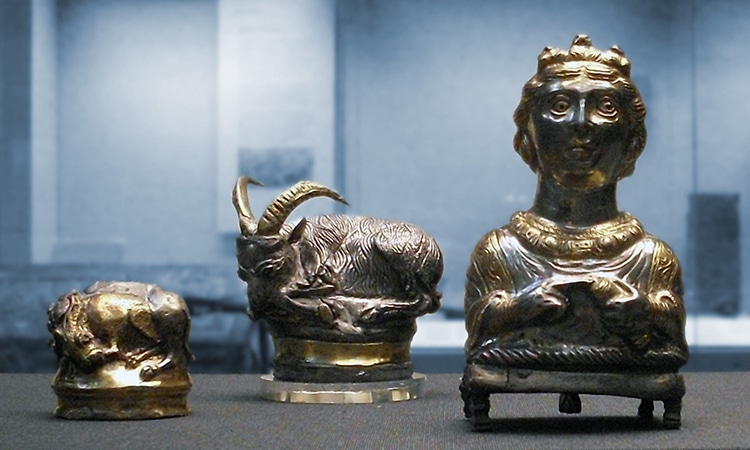
Silver-gilt Roman piperatoria (pepper pots) from the Hoxne Hoard, including the famous Empress Pepper Pot (far right). (Photo: Wikimedia Commons [Public domain])
The St Ninian’s Isle Treasure Trove
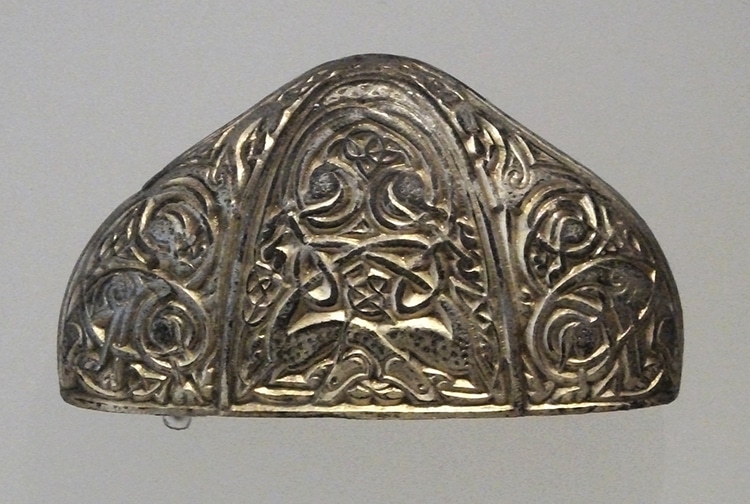
A sword hilt from the St Ninian’s Isle Treasure. (Photo: Johnbod via Wikimedia Commons [CC BY-SA 3.0])
The Staffordshire Hoard
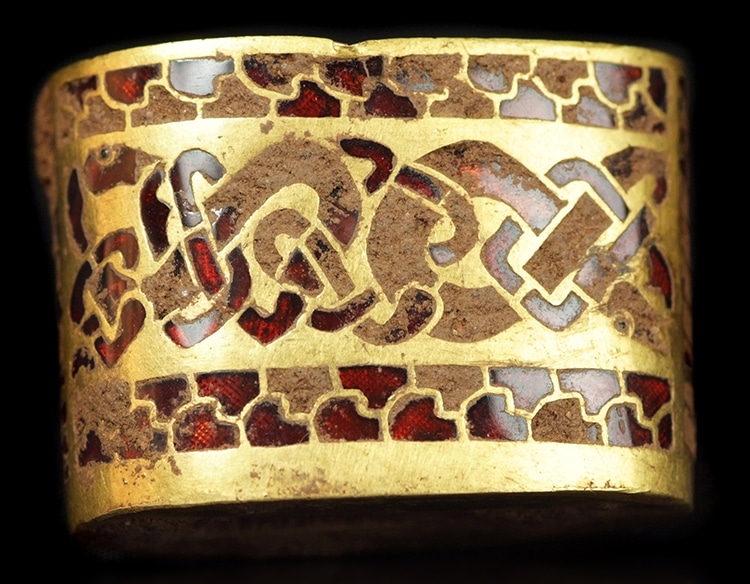
Anglo-saxon gold bracelet from the Staffordshire Hoard. (Photo: Hilt Fitting via Wikimedia Commons [CC BY 2.0])
The Mildenhall Treasure Trove

Bacchus on the great Roman dish from the Mildenhall Treasure. (Photo: JMiall via Wikimedia Commons [CC BY-SA 3.0])
The Ziwiye Hoard
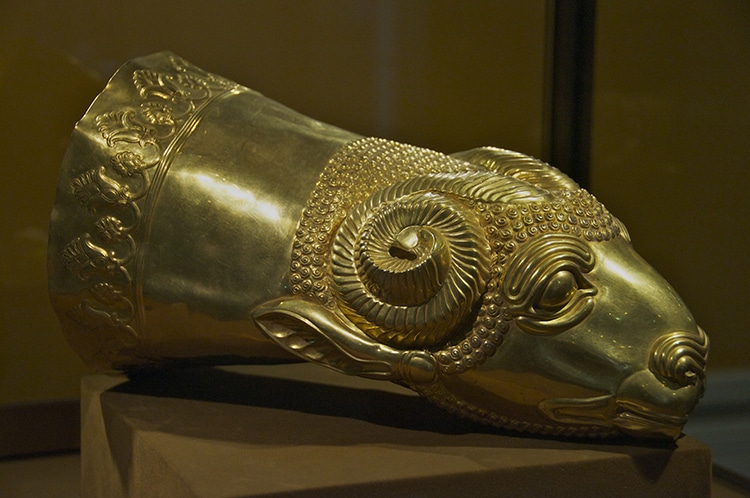
A gold rhyton (drinking horn) in the shape of a ram’s head from the Ziwiye hoard. (Photo: A. Davey via Wikimedia Commons [CC BY 2.0])
The ancient Near East has stunning treasure troves—among these is the Ziwiye Hoard. Discovered in Iran in 1947, the details of its discovery are rather murky. Many pieces have dispersed into private collections, part of the exploitive antiquities trade which accompanied Western imperialism in the Middle East. However, certain stunning items have come to define the cultural diversity of ancient Iran around the 9th century BCE. Located on the Silk Road and other trade routes, the items show Assyrian, Scythian, other regional influences. Particularly stunning is a gold rhyton in the shape of a ram’s head, a drinking cup fit for a king.
The Spillings Hoard
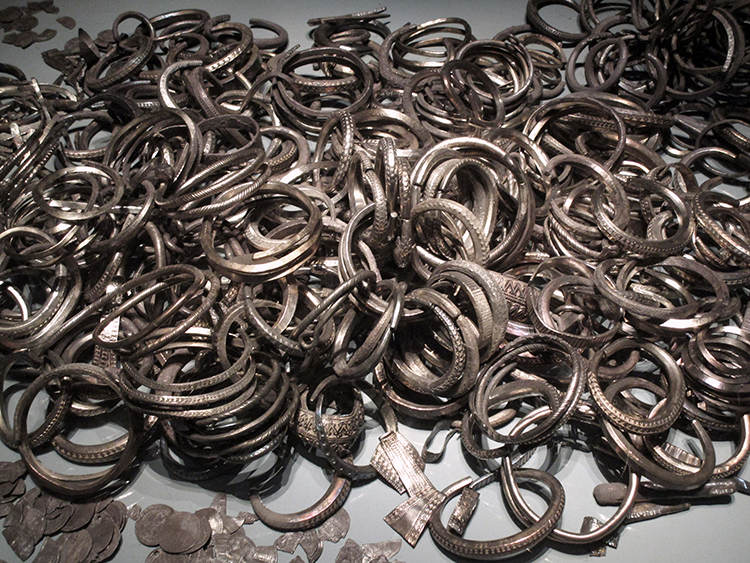
Viking silver from the Swedish Spillings Hoard. (Photo: W. carter via Wikimedia Commons [CC BY-SA 4.0])
Did you know the Vikings buried treasure? A Swedish cache of Viking silver discovered in 1999, the hoard included thousands of early medieval century coins. Most of the coins were of Islamic origin. This find—as well as others in Sweden—demonstrate the range of trade in the period. Viking deposits include coins from as far away as North Africa and Central Asia.
The Treasure of Villena

Gold items from the Treasury of Villena.
Hiding valuable things has apparently long been a human instinct. Around 1000 BCE, Bronze Age Spaniards buried gold bowls, bottles, and bracelets alongside iron (also considered valuable at the time). These gold items feature raised patterns, and are evidence of advanced gold-working skills in prehistoric times.
The Panagyurishte Treasure Trove

Thracian gold artifacts from the Panagyurishte Treasure. (Photo: Ann Wuyts via Wikimedia Commons [CC BY 2.0])
Discovered in Bulgaria in 1949, the Panagyurishte Treasure is Thracian gold. The Thracians were ancient Indo-Europeans who lived in the Balkans and Anatolia. The golden items were buried between 400 and 300 BCE. Mentioned in the Illiad, the Thracians are a fascinating ancient people. (You can learn more about their history on.)
The Wonoboyo Hoard
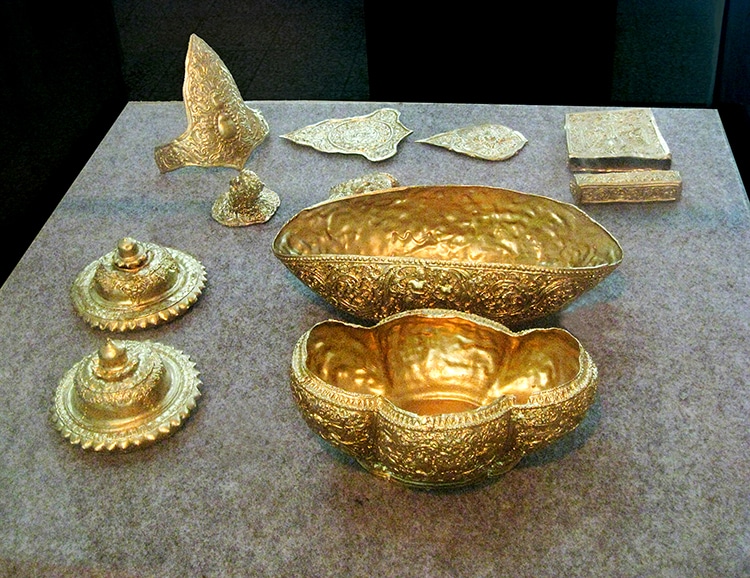
Replicas of the gold items found in the Wonoboyo Hoard, discovered in 1990 in Central Java, Indonesia. (Photo: Gunawan Kartapranata via Wikimedia Commons [CC BY-SA 3.0])
The Wonoboyo Hoard was discovered in 1990 in Central Java, Indonesia. These 9th-century golden artifacts of the Medang Kingdom—jewelry and small bowls of exceptionally fine quality—were found buried in earthen jars. Experts have suggested the items belonged to a member of the royal family. is an exquisite, ancient tradition virtually unparalleled elsewhere; to see some of the finest gold craftsmanship, check out the of the Metropolitan Museum of Art.
Dream of fabulous treasure, just like your childhood self.
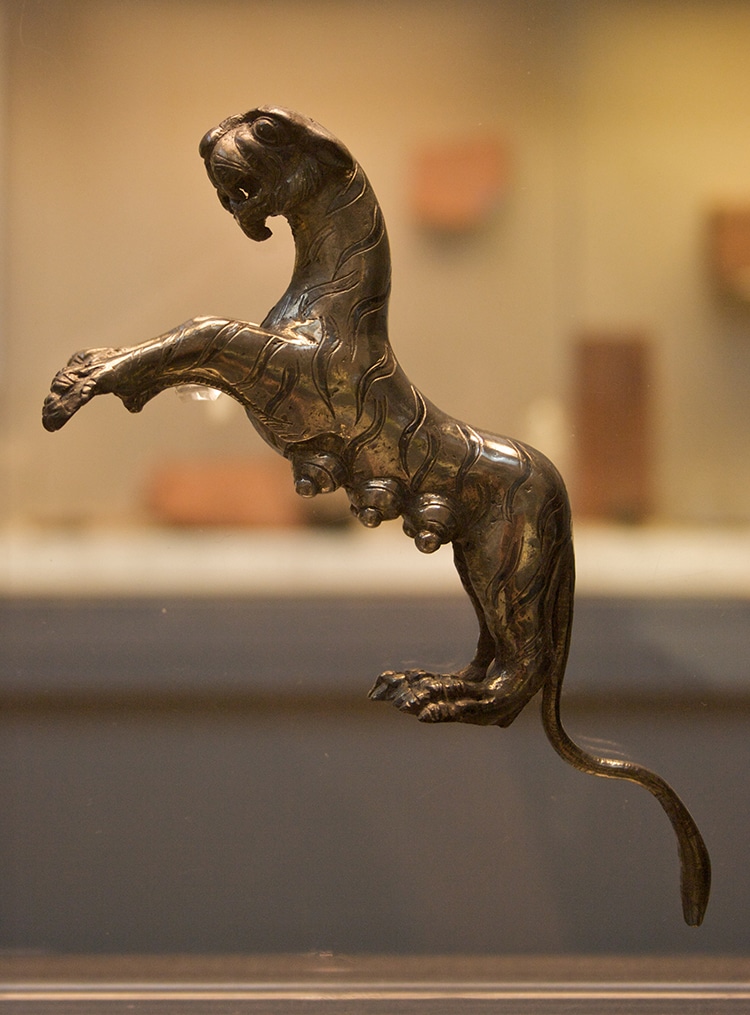
A handle shaped as a tigress from the Hoxne Hoard. (Photo: Mike Peel via Wikimedia Commons [CC BY-SA 4.0])
Related Articles:
Buried Treasure Chest Worth $2 Million Is Discovered in the Rocky Mountains
This Armless Sculpture Is One of the Louvre’s Most Treasured Masterpieces
Visually Satisfying Arrangements of Hidden Treasures Pulled From Amsterdam’s River
Intriguing Family Portraits Feature Treasured Objects


